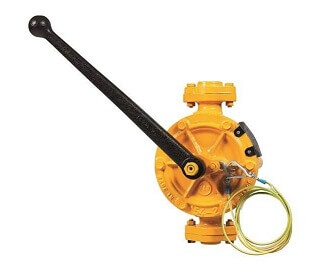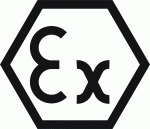ATEX Pump Guide
What is ATEX?
ATEX is a broad term used to describe equipment which will be placed within an explosive atmosphere. Codes are used to rate equipment according to several factors depending on the zone the equipment will be placed, the temperatures that the pumps will reach, gases present, and whether there is flammable dust.
The ATEX rating of any pump is specified by the client as it is not possible for a supplier to fully assess the risks, and gases present. We have put together the below guide to make it as straight forward as possible to specify the code in which equipment should be supplied to.
Atex zones are classified according to various criteria with the options being Zone 0, Zone 1 or Zone 2.
Zone 0 – An area where an explosive atmosphere is continuously present, or pump is immersed in a flammable liquid
Zone 1 – An area in which an explosive atmosphere is present during normal operation of equipment
Zone 2 – An area in which an explosive atmosphere is not likely to cover during normal operation however it may be present for short periods.
What do the various codes mean?
An atex code can consist of 15 separate character each of which has its own meaning. Typically an ATEX code will be constructed as follows:
CE Ex II 2 G EEx de IIC T4
CE
The initial CE means that the equipment complies with the relevant European Directives. The CE can be followed by an additional number which details the body number which the equipment complies with.
EX
This is the equipment marking identifying the item of equipment as compliant with ATEX.
Equipment Group
This table provides the coding detailing the location of the pump, protection category code and equipment code.
Types of Ignition Protection
The code details the design used in the equipment to protect against ignition
Environment
This section of the code details the environment in which the pump will be placed.
Temperature Class
This details the maximum surface temperature of the relevant equipment. This is because certain gases could ignite if the surface temperature of certain equipment is higher than the ignition temperature.
Although parts of an ATEX code will specify the IP rating of motors, typically IP ratings do not bear any relation to ATEX coding.
We do not supply Submersible ATEX pumps as manufacturers are increasingly moving away from the immersion of electrical motors within flammable fluids, as seals must be checked for ingress and there is a high probability of ignition.
What is preferable and a better solution is an immersion pump where the pump is situated in the fluid but the motor is located outside of the fluid, or a self-priming pump which is surface mounted outside of the flammable liquid.
To learn more about alternatives to submersible ATEX pumps, we have compiled a guide to Self-Priming Pumps vs. Submersible and Immersion Pumps.





